Posts Tagged: spring
Take Stock: It's the First Day of Spring
Take stock of your flowers and pollinators; today is the first day of spring. If Virginia stock, Malcolmia maritima, is blooming in your...
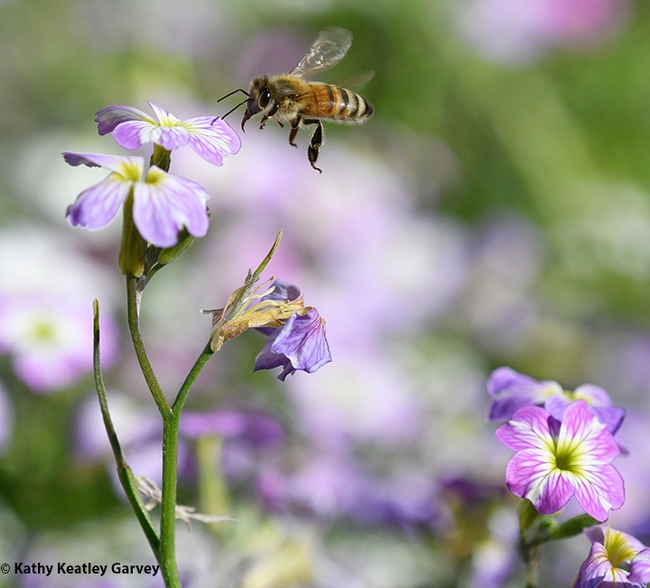
It's spring! A honey bee heads toward a Virginia stock blossom, Malcolmia maritima. (Photo by Kathy Keatley Garvey)
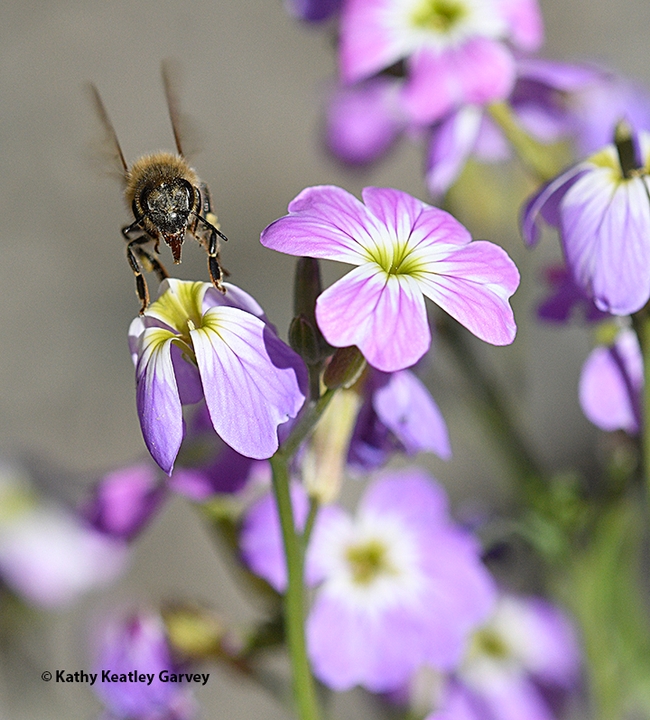
A honey bee prepares to land on a Virginia stock blossom, Malcolmia maritima. (Photo by Kathy Keatley Garvey)
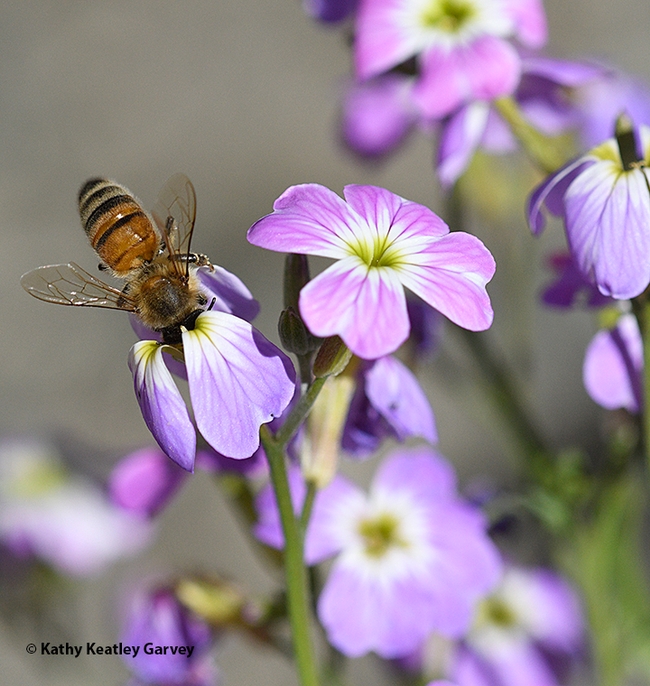
Bottoms up! The honey bee sips nectar from the fragrant Virginia stock, Malcolmia maritima. (Photo by Kathy Keatley Garvey)
Entomological ABCs: Ants, Bees and Caterpillars
Urban landscape entomologist Emily Meineke, assistant professor, UC Davis Department of Entomology and Nematology, is coordinating the department's...
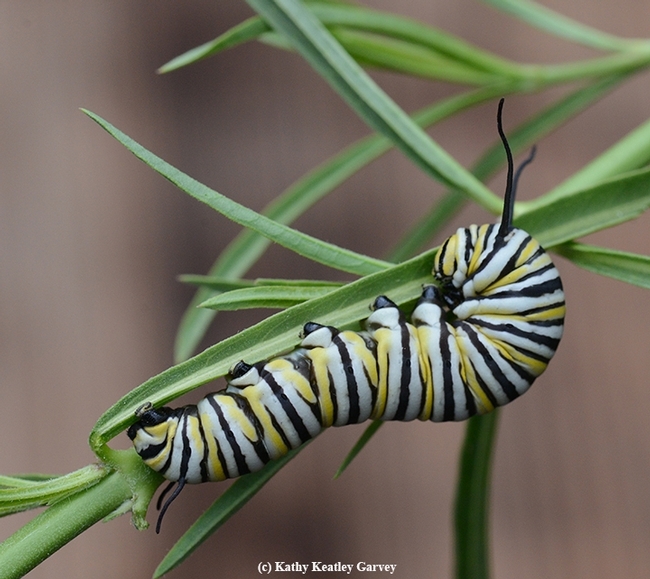
A monarch caterpillar, Danaus plexippus, munching on milkweed. (Photo by Kathy Keatley Garvey)
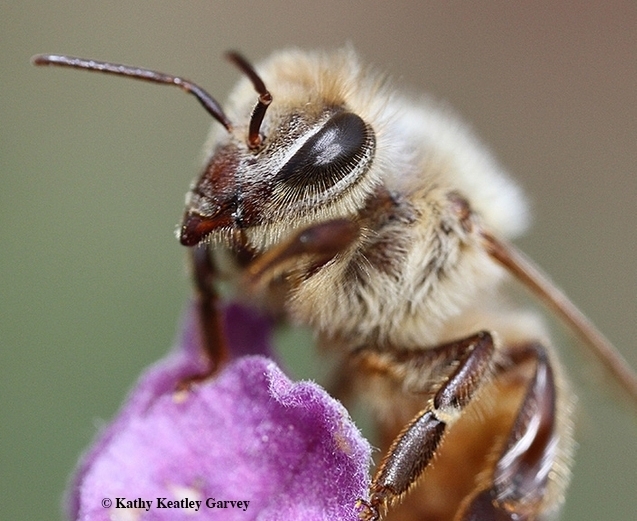
Close-up of a honey bee, Apis mellifera. (Photo by Kathy Keatley Garvey)
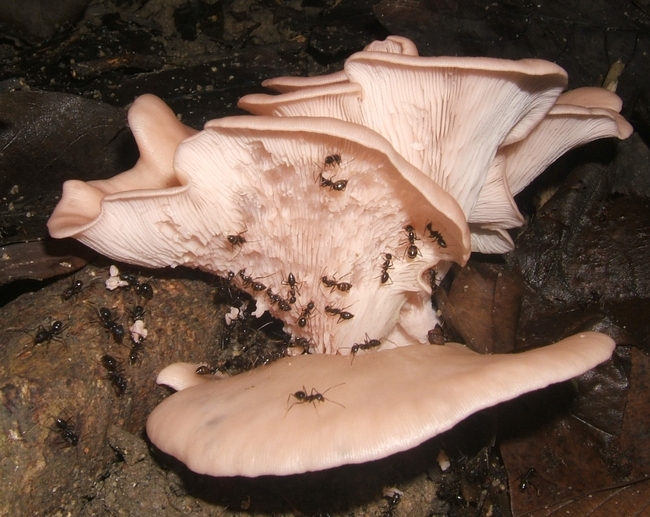
Rainforest ants, Euprenolepis procera feeding on a Pleurotus mushroom. (Photo courtesy of Wikipedia)
A Very Hungry Bumble Bee
She was all bees-ness, this yellow-faced queen bumble bee, Bombus vosnesenskii. There she was, foraging in a bed of steely blue-purple...
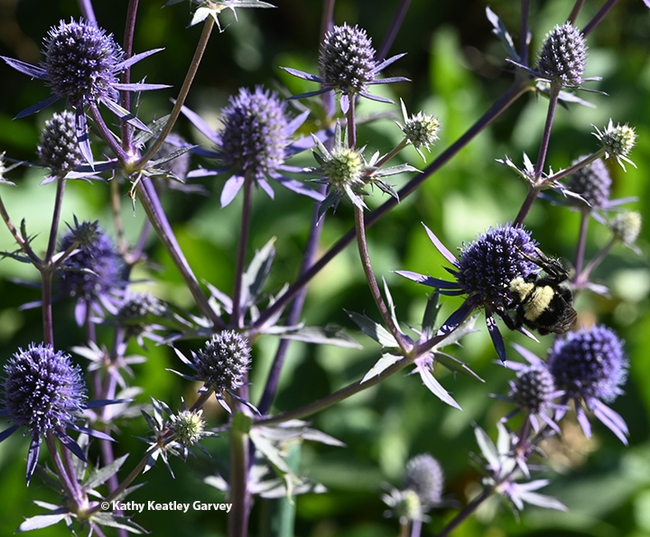
Can you spot the bumble bee in this bed of Eryngium amethystinum in the Sunset Gardens, Sonoma Cornerstone? (Photo by Kathy Keatley Garvey)
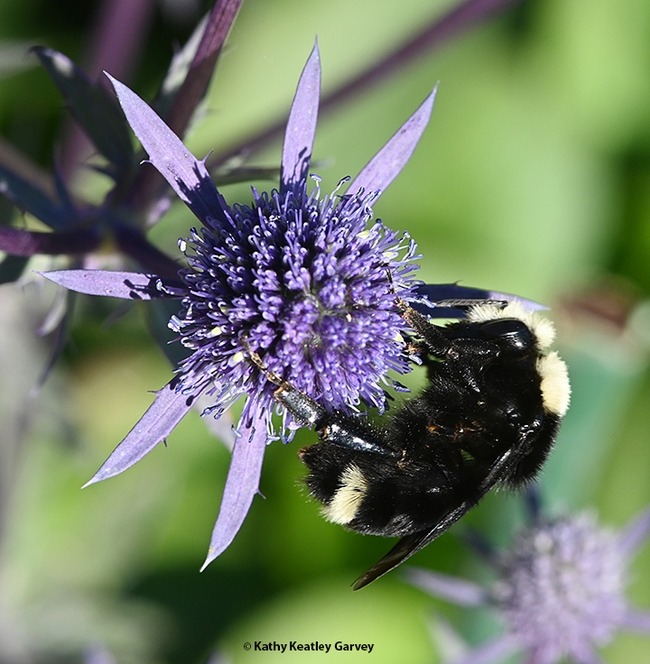
This image shows the characteristic yellow face and yellow stripe on the abdomen of a yellow-faced bumble bee, Bombus vosnesenskii. She is nectaring Eryngium amethystinum, in the Sunset Gardens at Sonoma Cornerstone. (Photo by Kathy Keatley Garvey)
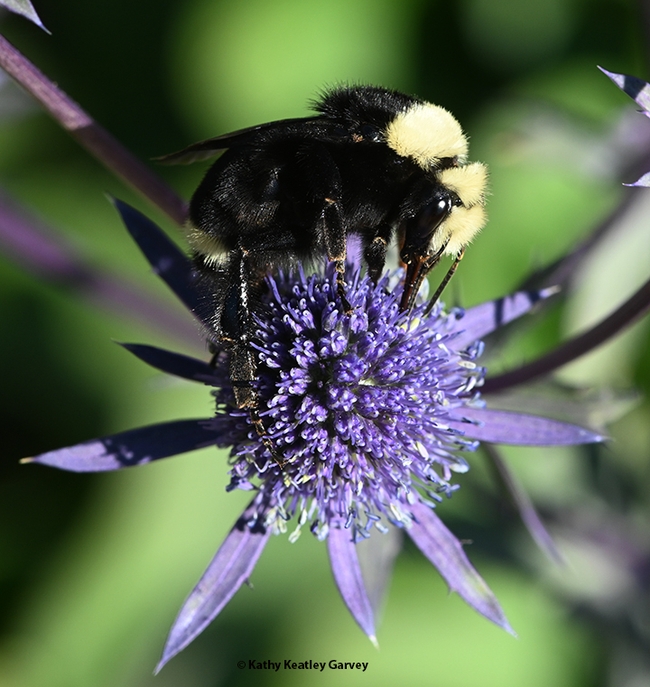
With her long proboscis, B. vosnesenskii sips nectar from an Eryngium amethystinum. (Photo by Kathy Keatley Garvey)
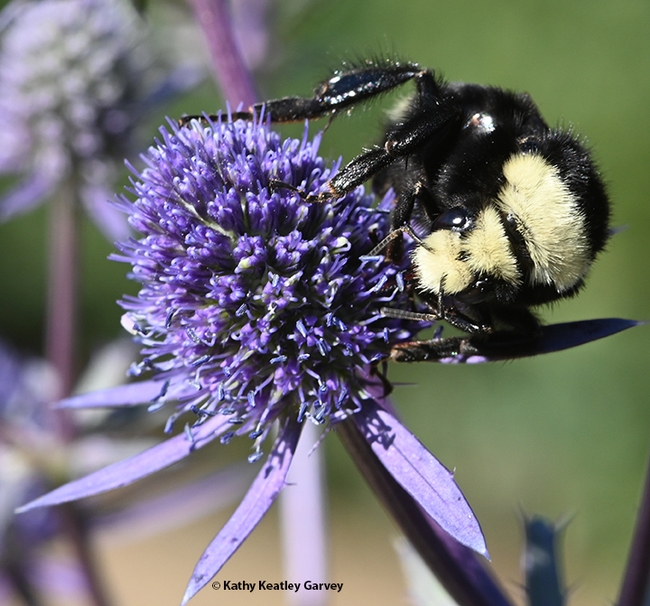
Close-up of the yellow face of the yellow-faced bumble bee, Bombus vosnesenskii. (Photo by Kathy Keatley Garvey)
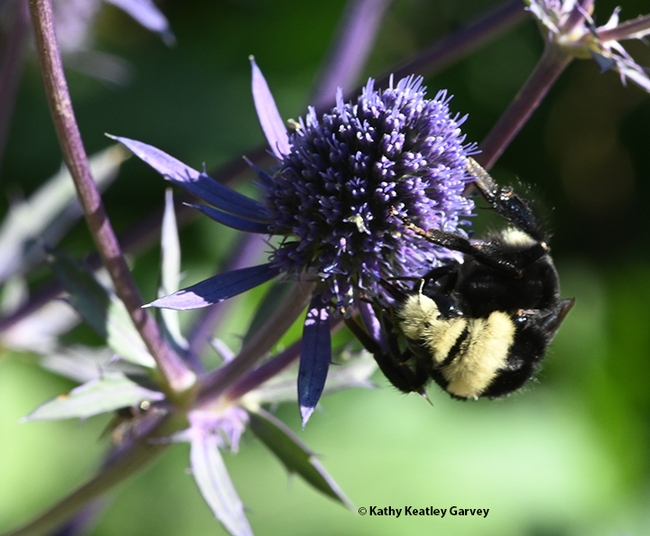
Bombus vosnesenskii moves around the Eryngium amethystinum. (Photo by Kathy Keatley Garvey)
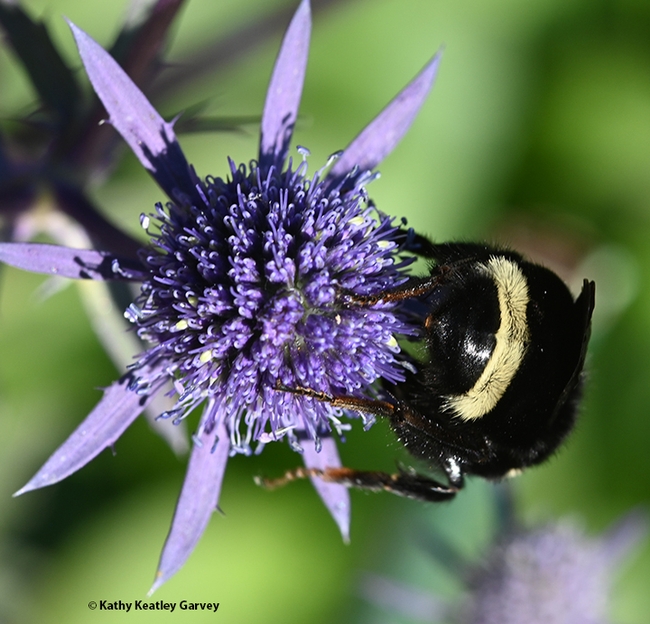
Bye, Bombus vosnesenskii. (Photo by Kathy Keatley Garvey)
Seminar Topics: From Mammoth Wasps to Medflies to Nematodes
Ready to learn about mammoth wasps, medflies, nematodes and pesticide risks to polilnators, or delve into such topics as "Mystery of the Missing...
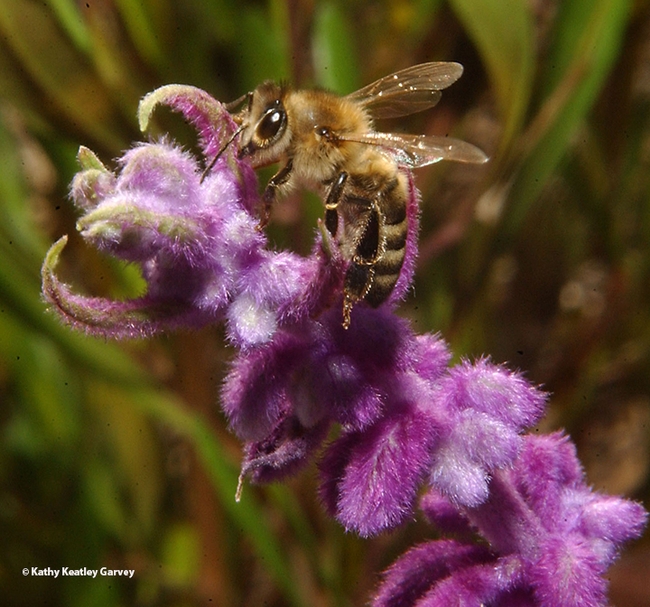
Bees will be among the spring seminar topics hosted by the UC Davis Department of Entomology and Nematology. UC Irvine faculty member Tobin Hammer will speak on "Mystery of the Missing Microbes: Why Do Bees Keep Losing Their Symbionts?" (Photo by Kathy Keatley Garvey)
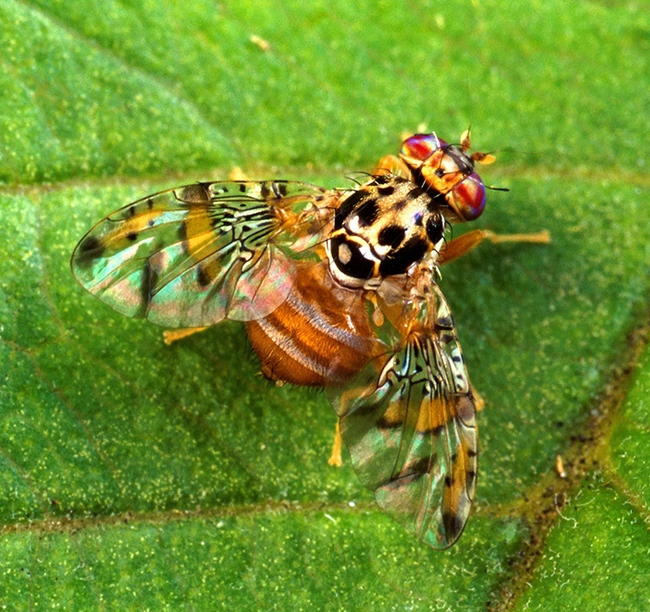
The Mediterranean fruit fly will be the topic of UC Davis distinguished professor James R. Carey's seminar on May 25. (Photo by Scott Bauer, U.S. Department of Agriculture)
A Bee-Line to the Bohart Museum: T-Shirts and Calendars
Folks are making a bee-line to the Bohart Museum of Entomology, University of California, Davis, for its spring sale. All proceeds support the insect...
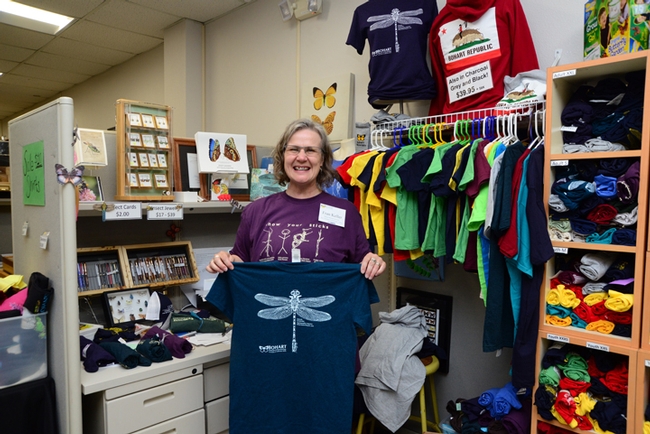
Bohart associate Fran Keller, an assistant professor at Folsom Lake College and a UC Davis alumnus (she received her doctorate in entomology studying with Lynn Kimsey) holds some of the new dragonfly t-shirts available at the Bohart Museum. (Photo by Kathy Keatley Garvey)
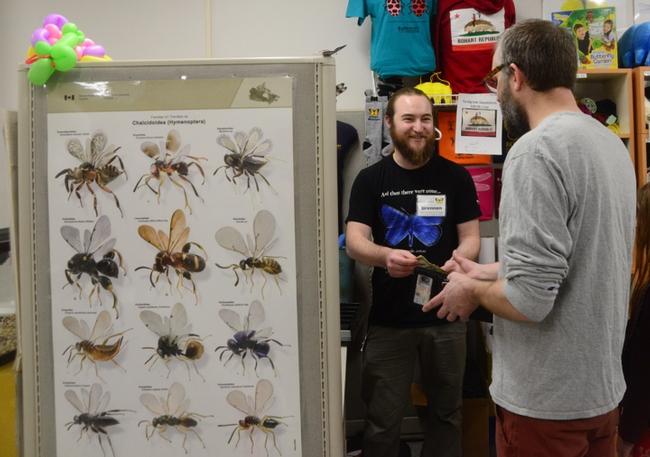
Brennan Dyer, a research associate at the Bohart Museum of Entomology, staffing the Bohart Museum's gift shop. (Photo by Kathy Keatley Garvey)
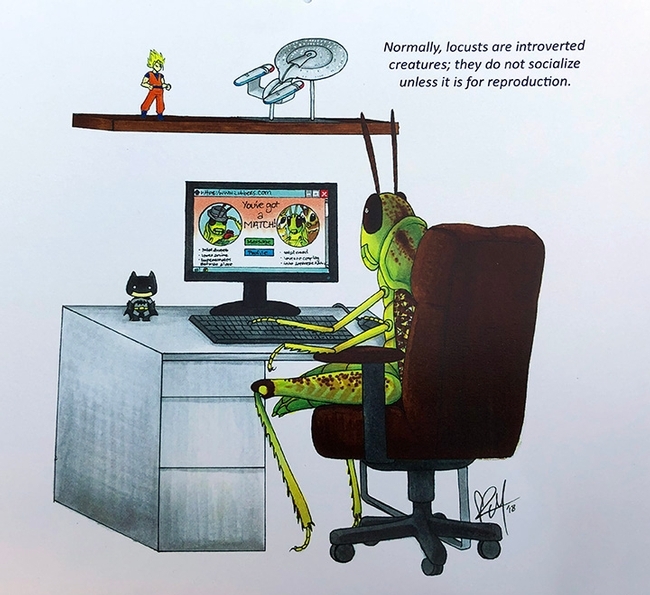
"Normally, locusts are introverted creatures; they do not socialize unless it is for reproduction." This is what one of Lynn Kimsey's students wrote in an exam, and what artist Karissa Merritt interpreted for the Bohart Museum's innovative calendar. (Photo by Kathy Keatley Garvey)

